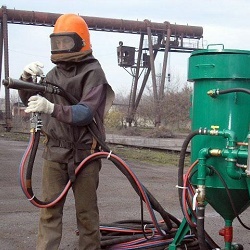Types of equipment for sandblasting
How to clean a brick wall from mold and lichen growths? How to remove corrosion from metal pipes and structures? How to matte glass? There is one simple answer to these and many other questions. A modern sandblaster, depending on the technical characteristics, is capable of fine and coarse cleaning, as well as specific types of treatment.
Content
What is sand blasting, its scope
Equipment for sandblasting today can be found in the shops of enterprises of all kinds of activities. As examples of the use of such a short list:
- companies engaged in glass processing, matting, the formation of complex patterns on the surface;
- engraving workshops;
- enterprises engaged in work with pipelines;
- electroplating workshops;
- Service stations providing body painting and repair of metal structures of the car.
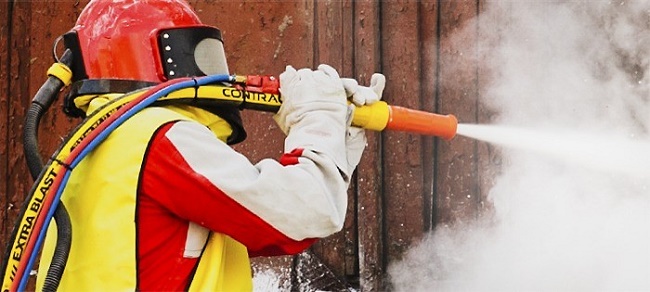
Sand blasting is needed at shipbuilding yards, in small art workshops for working with wood, for utility companies engaged in cleaning building facades and other structures.
Important! To say exactly how the sandblaster looks like is quite difficult. This may be a small camera, a large isolated room for the work of one or several operators. Depending on the principle of action, the list of functional blocks of the installation also differs.
However, the overall mechanics of all installations, without exception, remains unchanged. Sand blasting affects the target surface with abrasive, which is ejected with great speed. Particles literally break scale and rust from metal, knock out small grains of glass. Some types of treatment (for example, steel balls) allow you to get the effect of leveling the surface and its shock strengthening.
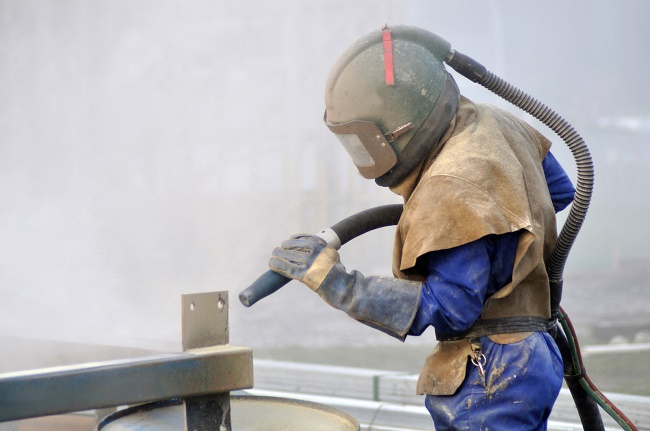
Sandblasting Elements
Regardless of the size of the specific engineering solution, the apparatus for sandblasting conditionally consists of the following parts:
- accumulative capacitance receiver to stabilize the parameters of the air supply;
- a sandblaster pistol and nozzle, serving as a guide loop for the flow of ejected particles;
- container with abrasive;
- block of automatic control of air supply pressure;
- automatic emergency shutdown when, for example, a pistol falls to the ground or depressurization of a sandblaster;
- compressor control unit.
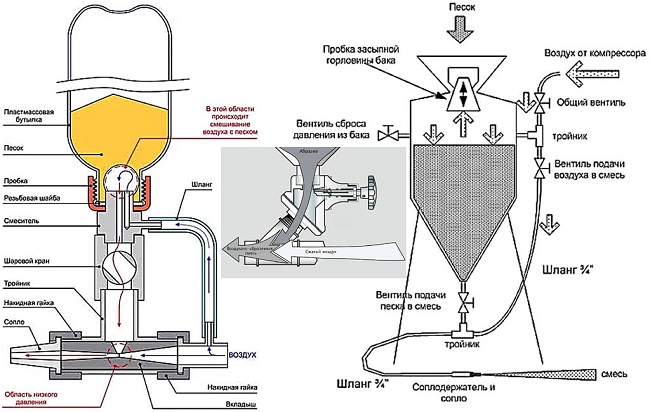
Ready air-abrasive mixture to the gun delivers the hose. The final performance of the entire installation depends on its diameter.
Characteristics of individual parts of sandblasting may vary depending on the tasks to be solved with the help of one or another modification. The main problem of the installation is that when ejecting abrasive nozzle last wear out. Therefore, reliable, durable materials are used. The sandblasting gun with a ceramic nozzle, which shows good longevity results, is very popular.
Venturi nozzle - this is a special tip for sandblasting, evenly distributing abrasive over a large area with virtually no reduction in particle velocity. Such a nozzle can not be made of ceramics. Tungsten carbide and other strong alloys are used to manufacture the element. The Venturi nozzle with an operating time of 400 hours (depending on the material) pays for its application, since it reduces the consumption of abrasive to 40%.
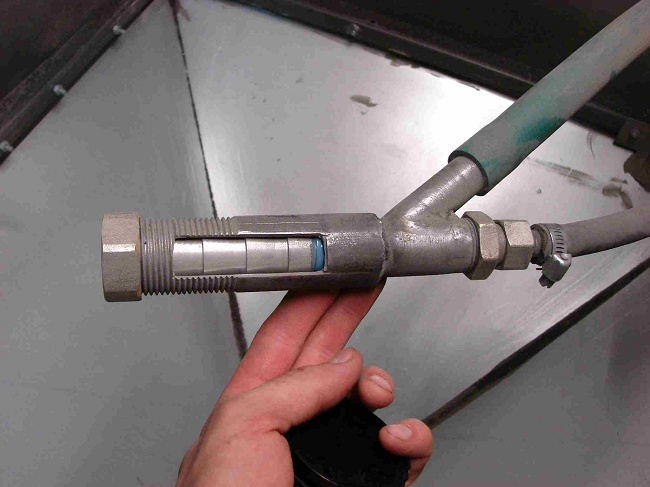
Venturi nozzle
Already from the description of only two different nodes with the same purpose, it becomes clear how many variants of sandblasting equipment are. And each of them is designed for the optimal solution of individual problems.
Types of sandblasting equipment
Equipment for sandblasting can be divided into several category grids. The first classification is by type of camera.
- Closed type camera can conditionally be called hermetic. These are stationary devices of various sizes.
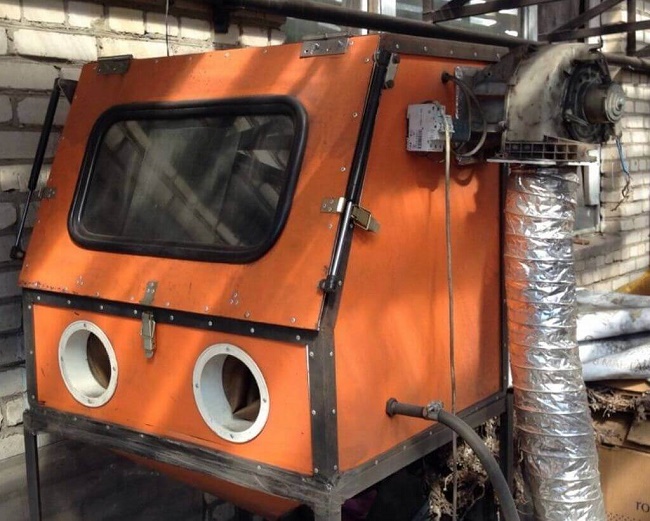
- Open Camera allows you to remove restrictions on the size of the object to be processed. In simple terms - the open-sided box can move around the target area for sequential cleaning.
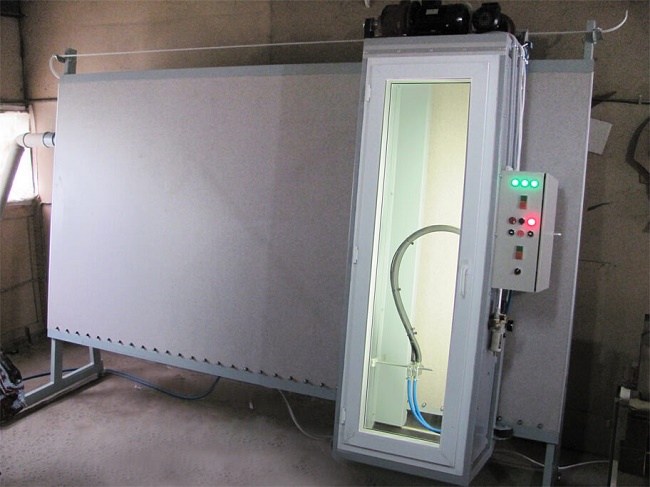
The second classification division concerns human presence in the work area. Cameras can be uninhabited (for example, equipped with robotic manipulators or rubber gloves) and habitable, where one or several operators work directly.
The third division is according to the method of forming an air-abrasive mixture and feeding it to the point of discharge.
- Pressure type sandblaster - The most common class of equipment. Installations differ in big productivity and a wide set of abrasives, available to use. The working mixture is prepared in an external tank and fed to the gun through a single hose.
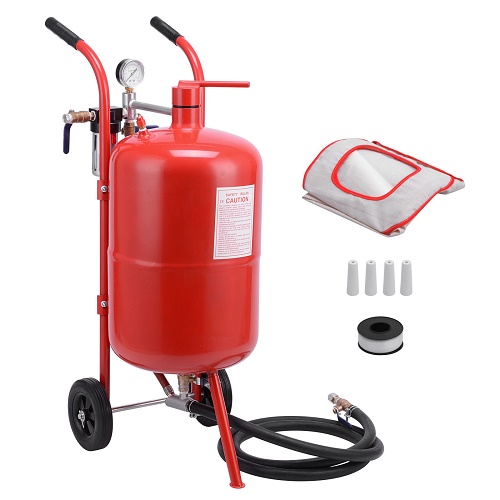
- Ejector type sandblasting machines form the working mixture directly in the gun. Air and abrasive supply takes place on different hoses. Ejector equipment can operate only with fine particles with a size of up to 1.2 mm, it conducts a rather delicate cleaning.
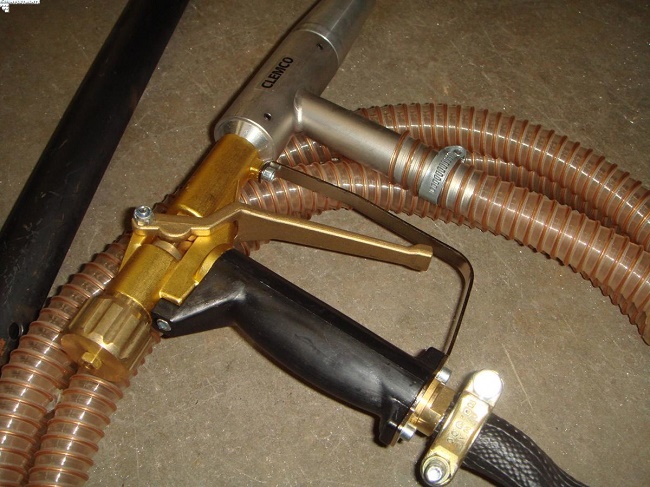
Separate class act vacuum installations. They can be both pressure and ejector.
Important! The devices got their name because of the mechanics of the formation of vacuum in the zone of ejection of the working mixture. Abrasive is collected immediately after use.As a result, dust emissions to the environment are minimized.
Another classification division - according to the type and parameters of the carrier of the abrasive. Stand out in separate classes:
- air equipment powered by a compressor;
- device for wet sandblasting, acting water-abrasive compositions or water under considerable pressure;
- fire (thermal) equipment, the abrasive in which moves in a jet stream of hot gases formed as a result of burning liquid fuel;
- blasting units operating with air jets, sometimes with the addition of a soft abrasive, for example, plastic granules, soda.
The last category by type of carrier of the abrasive stream is cryogenic blasting equipment. Here, the surface is cleaned with particles of carbon dioxide ice moving at a tremendous speed. The result is a very delicate, professional character of fine processing and zero dust emission into the environment.
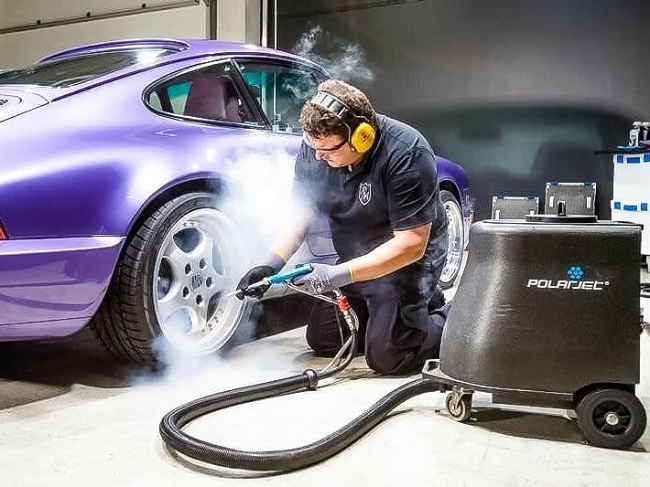
Sandblasting selection criteria
It is necessary to list the typical tasks for the solution of which there may be a need to choose a sandblaster:
- removal of coatings;
- alignment of the surface or, on the contrary - the creation of a small or artistic roughness;
- degreasing before electroplating;
- removal of traces of corrosion, dirt, soot, scale, slagging;
- artificial aging;
- engraving of inscriptions and patterns.
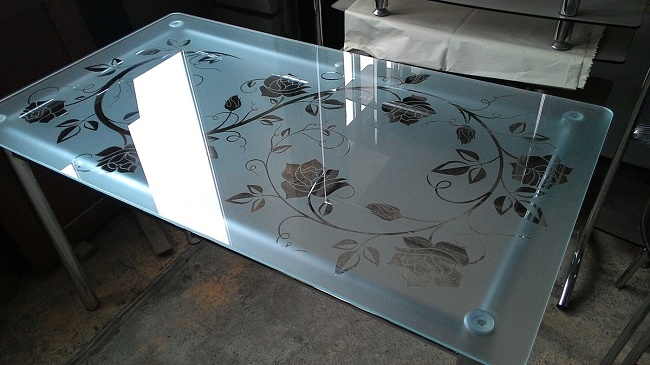
If there is no experience with sandblasting - better turn to specialists for advice on choosing equipment. The analysis takes into account:
- the number of places for operators or outlet hoses for supplying the working mixture;
- capacity for abrasive, which directly regulates the downtime of the installation;
- the presence of a remote control to work in uninhabited cameras;
- abrasive flow carrier;
- productivity of the sanding device (pressure head, ejector);
- the available sizes of particles of an abrasive and its character;
- parameters used nozzles.
As a recommendation, the following should be said: no need to save on equipment, hoping to make its modification in the future.
The most popular models of sandblaster 2018
Sanding apparatus Sorokin 10.1 19 l
Sandblaster AE & T T06505
Sandblasting gun Wester Ssp-10
Gun sanding Metabo Ssp 1000 (601569000)
Sanding device Inforce S 4020B

/rating_off.png)








